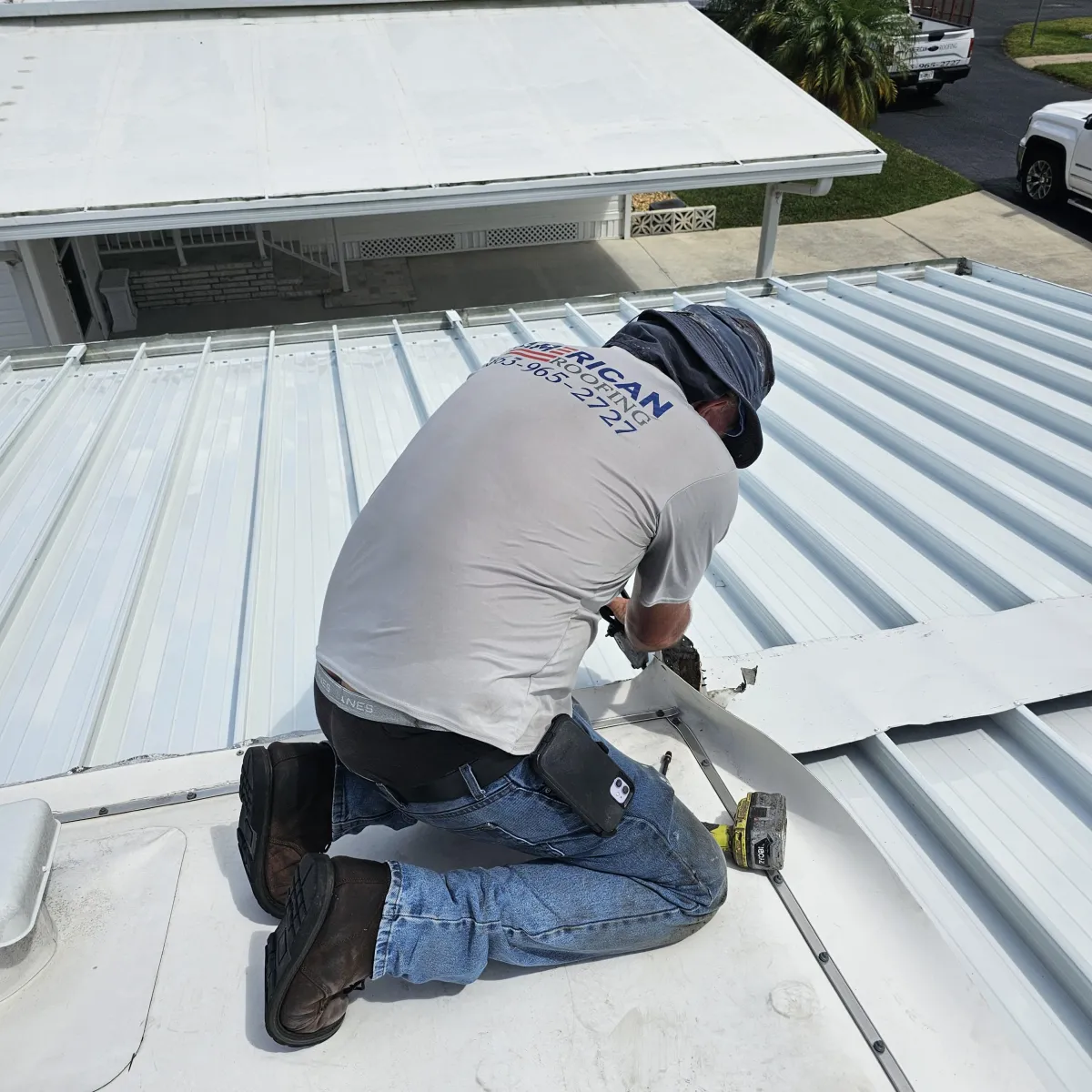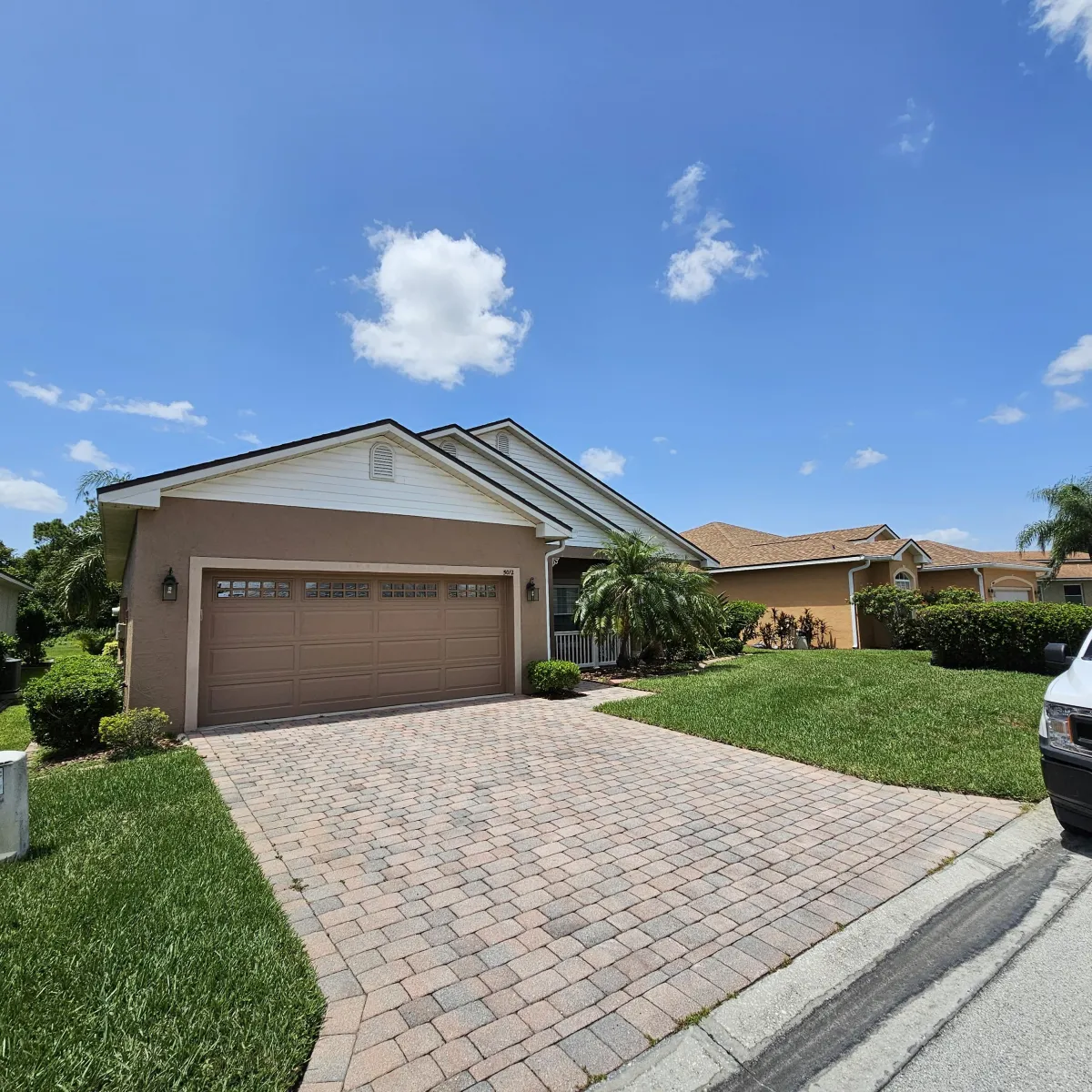Licensed & Insured Roofers in Polk County, FL
American Roofing FL provides roof repair, replacement, and storm-damage services across Polk County.
Serving Polk County and Central Florida
Get a FREE Estimate and Inspection
CALL NOW (863) 260-8699
FL Certified Roofing Contractor #CCC1334393 • BBB A+ Accredited • (863) 260-8699
Need Roof Repair or Replacement in Polk County?
Takes under 30 seconds. No obligation.
Prefer to Call?
Polk County Roofing Services
Comprehensive Roofing Solutions for Winter Haven & Polk County Homeowners.

Roof Repair & Leaks
Stop leaks with precise roof repairs. Free roof inspection and photo-documented estimate.
Serving Winter Haven & Polk County

Roof Replacement
Code compliant reroofs in shingle, tile metal, and flat. Clear photo documented roof estimate.
Serving Winter Haven & Polk County

Storm Damage Roofing
Emergency tarping dry-in protects your home after storms. Permanent repairs with estimate.
Serving Winter Haven & Polk County
Why Homeowners Choose American Roofing FL
Licensed, insured, local. We serve Winter Haven and all of Polk County with roof repair, replacement, and storm response for shingle, tile, metal, and flat roofs. Free inspections, written estimates, and straight answers.
Licensed & insured: Florida license CCC1334393 • BBB A+.
Local & fast: Based in Winter Haven, same-week scheduling across Polk County.
Clear quotes: Photos + written, itemized pricing—no pressure.
Quality & cleanup: Code-compliant installs, magnet sweep, and warranties.
Proudly serving Polk County: Winter Haven, Lakeland, Haines City, Davenport, Bartow, Lake Wales, and nearby areas!


Roofing Materials to Choose From
Curated Materials Solutions for Winter Haven & Polk County Homeowners

Shingle Roofing
Built to Florida code using durable asphalt shingles, synthetic underlayment, and drip edge for long-lasting weather protection and a clean, documented finish.
Serving Winter Haven & Polk County

Tile Roofing
Installed with high-strength concrete or clay tiles, proper flashing, and underlayment for superior durability, energy efficiency, and long-lasting curb appeal.
Serving Winter Haven & Polk County

Shingle Roofing
Built to Florida code using durable asphalt shingles, synthetic underlayment, and drip edge for long-lasting weather protection and a clean, documented finish.
Serving Winter Haven & Polk County

Tile Roofing
Installed with high-strength concrete or clay tiles, proper flashing, and underlayment for superior durability, energy efficiency, and long-lasting curb appeal.
Serving Winter Haven & Polk County

Metal Roofing
Crafted with standing seam or ribbed panels, weather-sealed fasteners, and durable coating for maximum longevity, energy savings, and a clean, lasting look.
Serving Winter Haven & Polk County

Flat / Low-Slope Roofing
Installed with high-strength concrete or clay tiles, proper flashing, and underlayment for durability, energy efficiency, and long-lasting curb appeal.
Serving Winter Haven & Polk County
Our Polk County Service Areas
Local crew, fast response. Click a city to see services in your area. Don’t see your city? We likely serve your neighborhood.

Winter Haven

Lakeland

Davenport

Bartow

Lake Wales

Haines City
American Roofing FL FAQs
Answers first. If you don’t see your question, call +1 863-260-8699 or complete our survey to book an inspection.

What areas do you serve?
Winter Haven, Lakeland, Auburndale, Haines City, Davenport, Bartow, Lake Wales, Eagle Lake, Kissimmee, Plant City, and nearby Polk County communities.
Do you charge for inspections and estimates?
No. Inspections and written, photo-documented estimates are free. You can use the contact form on this page to request one.
How fast can you come out for an inspection?
Usually within 24–48 hours, sooner when possible. Submit the contact form and we’ll confirm the first available slot.
Can you handle emergency leaks or storm damage?
Yes. We offer 24/7 emergency tarping and dry-in, then permanent repair or replacement. Use the contact form and mark it urgent.
What roofing materials do you install?
Asphalt shingle, tile (concrete/clay), metal, and flat/low-slope systems. We’ll recommend the best fit after inspection.
How do I know if I need a repair or a complete replacement?
Localized damage often means repair; widespread aging, repeated leaks, soft decking, or heavy granule loss point to replacement. We’ll show photos from your inspection.
How long does a roof replacement take?
Most homes are completed in one to two days, depending on size, access, and weather.
Are you licensed and insured?
Yes. Florida Certified Roofing Contractor CCC1334393; fully insured.
What’s included with a replacement?
Tear-off, synthetic underlayment, drip edge, proper flashings/vents, permits, cleanup with magnet sweep, haul-away, and workmanship + manufacturer warranties.
Do you help with financing or insurance claims?
We provide photos and detailed estimates to support claims and can discuss financing options. Start by submitting the contact form.
American Roofing FL FAQs
If you don’t see your question, call (863) 360-6804 or complete our survey to book an inspection.

What areas do you serve?
We’re based in Winter Haven and serve all of Polk County — including Lakeland, Haines City, Davenport, Bartow, Lake Wales, and more! If you’re nearby, we likely cover you.
How fast can you come out for an inspection?
Usually within 24–48 hours. After storms or active leaks, we prioritize same-day tarping or dry-in when needed.
Do you charge for inspections and estimates?
No, inspections and written estimates are free. We document our findings with photos and clearly explain your options.
Can you handle emergency leaks or storm damage?
Yes. We provide emergency tarping/dry-in and follow up with permanent repairs once the roof is safe and dry.
What roofing materials do you install?
Asphalt shingles, metal, tile, and flat/low-slope systems. We recommend the best fit for your home, budget, and Florida climate.
How do I know if I need a repair or a full replacement?
We inspect the roof, show you photos, and outline both options. Many issues are repairable; if a re-roof is smarter in the long term, we’ll explain why.
How long does a roof replacement take?
Most single-family homes are 1–2 days once materials are on site and weather allows.
Are you licensed and insured?
Yes. Florida Roofing Contractor #CCC1334393; fully insured; BBB A+.
What’s included with a replacement?
Removal of old materials, code-compliant underlayment and flashing, drip edge, proper ventilation, magnet nail sweep/cleanup, and a walkthrough at the end.
Do you help with financing or insurance claims?
We’ll provide the documentation your insurer needs and can discuss payment/financing options if applicable.
Homeowners Trust American Roofing FL
Licensed & insured (FL CCC1334393). BBB A+. Free inspections with photo-documented reports.

Roof Replacement • Winter Haven, FL
American Roofing FL replaced our shingle roof in Winter Haven. On time, tidy, and finished in two days. Clear photos, fair price, and warranty in writing. Zero nails left behind—five stars from our family.
Professional, efficient, and tidy, American Roofing made my roof replacement worry-free and straightforward.
- James B.

Roof Repair • Lakeland, FL
Called for a roof leak after a storm. American Roofing FL inspected same day, showed photos, and sealed flashing. No upsell, just honest work. Clean site, fair cost, and ceiling stain never came back. Yes.
They handled my storm damage and insurance claim smoothly, delivering excellent service. The roof looks fantastic!
- Ian M.

Emergency Tarping • Lake Wales, FL
After wind damage, they arrived at night to tarp the roof and stop leak. Photos and updates sent, then repairs followed. Professional, fast, and courteous. Insurance paperwork was easy with their help.
Prompt, courteous, and organized, their crew delivered a flawless roof replacement that I highly recommend.
- Ashton G.
Need Roof Repair or Replacement in Polk County?
Takes under 30 seconds. No obligation.
Prefer to Call?
Recent Roofing Projects in Polk County
Before & after results from homes we’ve serviced across Winter Haven, Lakeland, and more. Slide to compare.
Shingle Reroof Winter Haven
Tear-off + Owens Corning shingles; code-compliant underlayment; magnet sweep.
Emergency Tarping Lake Wales
Same-day weatherproofing after storm damage; photographed for insurance.
Metal Reroof Lakeland
29-ga. Metal paneling, energy-efficient finish, and upgraded flashing at penetrations.
Roofing Tips & Guides
Short, practical answers from our licensed Polk County team.
How Often Should You Inspect Your Florida Roof? (2025 Guide)
Florida roof inspections: American Roofing FL advises twice-yearly checks. Learn how to protect your roof and schedule your free inspection. ...more
Florida Roofing Tips: Inspections, Repairs & Maintenance
October 12, 2025•5 min read

Polk County Roof Damage: What to Do in First 48 Hours
Polk County storm damage? American Roofing FL provides a 48-hour plan. Stay safe, document damage, and get expert roofing help today. ...more
Storm Damage
October 12, 2025•5 min read

Polk County Roof Repair or Replacement? Decide Now!
Considering roof repair or replacement in Polk County? American Roofing FL offers free inspections, clear options, and expert advice. Call (863) 360-6804 today. ...more
Florida Roofing Tips: Inspections, Repairs & Maintenance
October 12, 2025•5 min read

Brand / NAP
American Roofing FL
Mon–Fri 9:00 AM–5:00 PM
Florida Certified Roofing Contractor CCC1334393





Copyright © 2025 American Roofing FL | Privacy Policy | Terms of Service | Roof Replacement | Roof Repair











